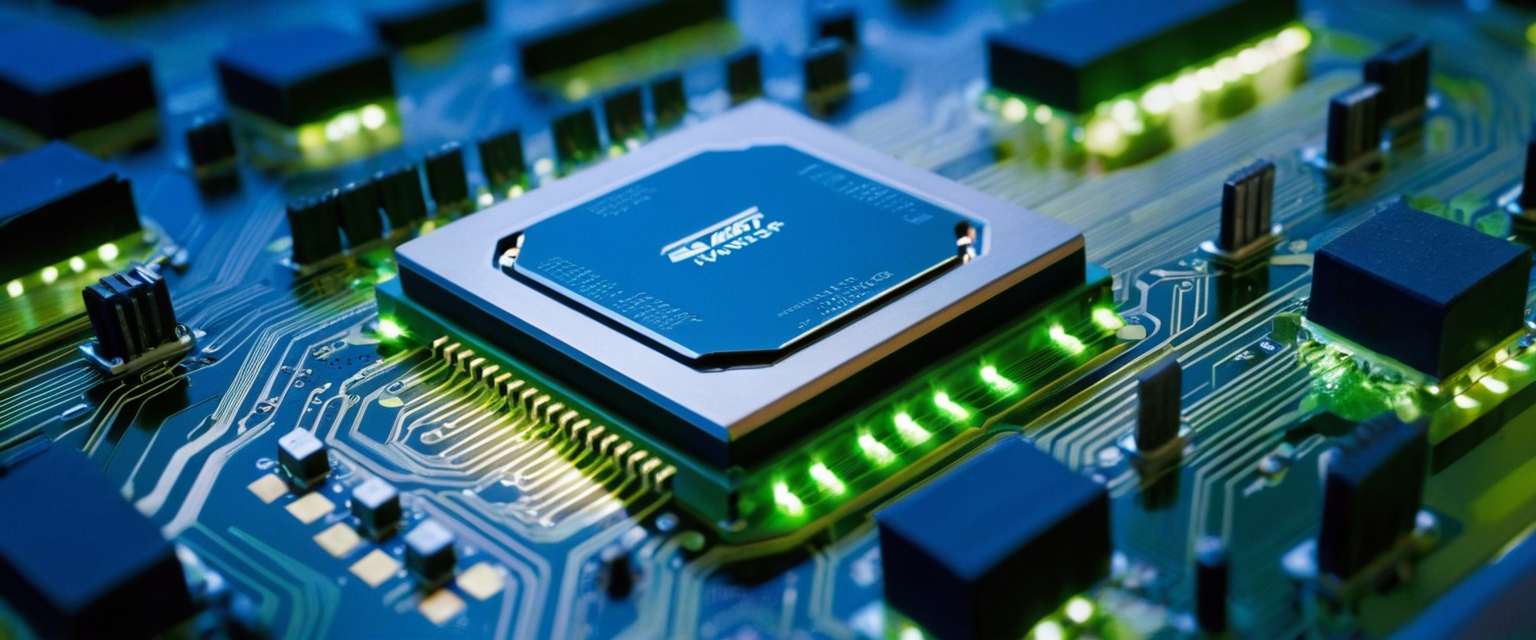
UEFI (Unified Extensible Firmware Interface) and firmware malware represent one of the most sophisticated and persistent threat vectors in modern cybersecurity, yet they remain widely underappreciated in traditional endpoint protection strategies. While conventional antivirus and ransomware solutions focus on operating system vulnerabilities and application-level threats, attackers have increasingly shifted their attention to firmware-level attacks that operate beneath all traditional security mechanisms, offering unprecedented persistence, stealth, and control over compromised systems. The emergence of real-world UEFI rootkits like LoJax in 2018, followed by sophisticated bootkits such as BlackLotus in 2022 that can bypass even advanced Secure Boot protections, has definitively demonstrated that firmware attacks are no longer theoretical threats but active, evolving challenges that every organization must address as part of comprehensive malware and ransomware defense strategies. This report examines the fundamental characteristics of UEFI and firmware malware, explores the most significant real-world attacks, discusses existing security mechanisms and their limitations, and provides practical recommendations for implementing effective protections within a layered, comprehensive virus protection strategy.
Understanding UEFI and Firmware Architecture
The Role of UEFI in Modern Computing Systems
UEFI, or Unified Extensible Firmware Interface, represents the modern successor to the legacy Basic Input/Output System (BIOS) and serves as the critical intermediary between a computer’s hardware and its operating system. When a computer powers on, the UEFI implementation is typically the first software that executes, before the operating system even begins to load, making it a fundamental component of the system boot process. Unlike its predecessor BIOS, which operated in a limited 16-bit environment with significant constraints, UEFI functions as a sophisticated, quasi-operating system capable of 32-bit or 64-bit execution and provides extensive functionality for hardware initialization, device configuration, and boot management. The UEFI specification, maintained by the UEFI Forum as an open industry standard developed collaboratively by technology vendors, defines how firmware and operating systems communicate through a standardized interface comprising data tables, boot services, and runtime service calls.
UEFI stores its initialization data and boot-related information in an EFI file located on a special partition called the EFI System Partition (ESP), which is typically formatted as FAT32 and occupies between 200 and 500 megabytes of storage space. This architectural approach differs fundamentally from legacy BIOS, which stored all of its data in firmware chip code and had extremely limited capacity for updates and modifications. Because UEFI configuration data is stored as files on a regular disk partition rather than entirely in read-only flash memory, the system can be more easily updated and modified, but this design also creates new attack vectors that sophisticated adversaries have learned to exploit. The UEFI specification supports numerous advanced features including network boot capabilities, graphics output protocols, human interface infrastructure for pre-boot configuration, and extensible driver and application support, making modern computers far more capable and flexible than their BIOS-based predecessors.
The UEFI Boot Process and Security Architecture
The UEFI boot process follows a carefully orchestrated sequence of phases, each building upon the security guarantees established by the previous stage, collectively creating what security professionals call a “chain of trust” where each component authenticates the next component before execution. When power is applied to a system, control begins with the platform firmware, which initializes the CPU, memory, and other basic hardware components through a phase known as SEC (Security), where the very first code executes in the most privileged mode. This early code must establish a trustworthy foundation because if attackers can compromise the firmware at this stage, they can disable all subsequent security mechanisms before they ever activate. The firmware then progresses through the PEI (Pre-EFI Initialization) phase, which performs additional hardware configuration and locates the main UEFI firmware image, followed by the DXE (Driver Execution Environment) phase where most of the actual boot functionality occurs, including loading device drivers, initializing peripherals, and preparing the system for operating system handoff.
Secure Boot, one of UEFI’s most important security features, leverages digital signatures and cryptographic verification to validate the authenticity and integrity of every piece of code loaded during the boot sequence. The Secure Boot mechanism maintains two critical databases of cryptographic keys: the Allow DB (db), which contains trusted certificates and code hashes for authorized bootloaders, EFI applications, and operating systems, and the Disallow DB (dbx), which contains revoked or compromised certificates and hashes of malicious code that must not be executed. During each boot, the UEFI firmware verifies that every piece of code attempting to execute possesses a valid signature from a certificate stored in the Allow DB and does not match any hash in the Disallow DB. If verification fails, the firmware refuses to execute the code and typically presents an error message, preventing unauthorized or tampered boot code from gaining control of the system. However, as subsequent sections will demonstrate, even this sophisticated protection has proven vulnerable to sophisticated attacks under specific circumstances.
The Critical Role of System Management Mode (SMM)
System Management Mode (SMM) represents one of the most powerful and least understood execution environments in modern x86 processors, operating at a privilege level above even the hypervisor (sometimes referred to as “Ring -2”) and executing in a special processor mode that is largely invisible to the operating system. When certain system events occur—such as hardware interrupts, power management operations, thermal threshold violations, or access to certain memory regions or I/O ports—the processor transfers control to SMM code, executing it with extraordinary privilege while the rest of the system is effectively halted. SMM code executes in a protected memory area called SMRAM (System Management RAM), which is isolated from normal system memory and inaccessible from the operating system or even the hypervisor, theoretically creating a secure enclave for critical system operations. However, this same extraordinary power and isolation that makes SMM useful for legitimate system functions also makes it an attractive target for sophisticated attackers seeking to gain deep, persistent control over a system while evading all operating system-level detection mechanisms.
The challenge with SMM from a security perspective is that it traditionally operated with minimal oversight or validation, allowing third-party code from various vendors and OEMs to execute with Ring -2 privileges with few guardrails. A compromised SMM driver or a vulnerability in existing SMM code can potentially allow an attacker to modify system-critical functions, access hypervisor memory, bypass security policies established by the operating system, or manipulate the firmware itself. Many well-documented vulnerabilities have been discovered in SMM implementations, often resulting from common C programming errors such as buffer overflows, heap overflows, integer overflows, type confusion, and improper pointer validation, errors that are particularly dangerous when they occur in code executing at SMM’s extraordinary privilege level. Because firmware development has historically received less security scrutiny than application development and because much UEFI firmware is derived from reference implementations like Tianocore EDK II that was designed more for flexibility than security, SMM code often contains security flaws that attackers can exploit to achieve privilege escalation and persistent control.
The Threat Landscape: UEFI and Firmware Malware
Why Attackers Target Firmware
Modern operating systems have implemented increasingly sophisticated security mechanisms that make traditional kernel-level attacks extraordinarily difficult, including driver signing requirements, kernel patch protection, address space layout randomization, code integrity enforcement, and hypervisor-based virtualization security features that fundamentally prevent the types of malware installation techniques that were trivial in earlier decades. Confronted with these modern OS-level defenses, attackers have recognized that the simplest way to circumvent a protection mechanism is to disable it before it ever activates, making the firmware boot process an extraordinarily attractive attack target. By compromising firmware before the operating system loads, attackers can execute malicious code at the highest privilege level, disable security features like hypervisor-protected code integrity and credential guard, inject malicious code into the OS boot sequence, and establish persistence mechanisms that survive OS reinstallation, hard drive replacement, and all traditional incident response activities.
The persistence benefits of firmware-level attacks are particularly compelling to sophisticated adversaries. Traditional malware can be removed through various recovery procedures: antivirus software can delete infected files, system administrators can reinstall the operating system from clean media, security teams can replace the hard drive or SSD with new storage, or users can restore from backup media. None of these traditional recovery procedures will remove firmware-level malware, because the malicious code resides in the firmware chip soldered directly onto the motherboard, which persists unchanged regardless of what happens to the operating system or storage devices. This unprecedented persistence, combined with the stealth provided by the fact that firmware operates entirely outside the operating system’s visibility and monitoring capabilities, creates an ideal persistence mechanism for advanced persistent threats (APTs) and nation-state actors seeking long-term undetected access to high-value targets.
Firmware attacks also open entirely new supply chain attack vectors that were previously impossible. If a manufacturer or component supplier can be compromised before devices reach end users, attackers could potentially pre-install malicious firmware that infects systems from the moment of first power-on, without the user ever knowing they received a compromised device. This supply chain vulnerability is particularly concerning given evidence suggesting that sophisticated state actors may actively target manufacturers and development infrastructure to achieve widespread device compromise at scale.
Detected UEFI and Firmware Malware Cases
The first documented UEFI rootkit discovered in an actual cyberattack, rather than merely as a theoretical proof-of-concept, was LoJax, discovered by ESET researchers in October 2018. LoJax represented a watershed moment in cybersecurity history, definitively proving that sophisticated attackers had moved beyond theoretical UEFI attacks and were actively deploying this technology in real-world campaigns. The rootkit was deployed by Sednit (also known as Fancy Bear or APT28), a sophisticated Russian state-sponsored group, and primarily targeted government institutions and high-value enterprises across Eastern Europe. LoJax achieved persistence by modifying the UEFI firmware itself, embedding malicious code directly into the firmware image stored in the SPI flash memory, allowing the compromised firmware to install a malicious kernel driver and HTTP downloader each time the system booted. The attack chain began when the malware achieved administrative access on the target system—likely through phishing or another social engineering vector—and then used a signed but vulnerable kernel driver (Read Write Everything) that was freely available on the internet to read the existing UEFI firmware image, modify it with malicious payloads, and flash the modified image back to the SPI flash. Because this malicious firmware was hidden in the SPI flash storage location where the bootloader resides, and because traditional security solutions do not monitor the firmware layer, the infection could persist indefinitely, surviving OS reinstalls, antivirus scans, and hard drive reformatting.
The subsequent years witnessed the discovery of additional sophisticated firmware attacks, each demonstrating new capabilities and attack techniques. MoonBounce, discovered in early 2022, represented significant advancement in UEFI malware sophistication, as it not only persisted in SPI flash memory but also demonstrated the remarkable capability to survive firmware updates, suggesting attackers had discovered methods to preserve their malicious code even when manufacturers attempted to patch the firmware with official updates. MoonBounce was believed to have been deployed by a nation-state actor and targeted high-profile technology and defense sector organizations, reflecting the strategic value of firmware compromises to advanced adversaries. TrickBoot, an extension of the infamous TrickBot malware discovered in 2020, demonstrated yet another firmware attack methodology, this time focused on manipulating UEFI firmware settings and writing malicious code directly to firmware to either brick devices entirely or establish long-term access vectors. BlackLotus, discovered in 2022 and actively sold on underground forums, represented a watershed moment in firmware threats—it was the first publicly known UEFI bootkit capable of bypassing UEFI Secure Boot itself, circumventing what many organizations considered an essential security control.
The discovery of these real-world firmware attacks has profound implications for the cybersecurity industry. For decades, security professionals debated whether firmware attacks represented realistic threats or merely theoretical concerns that sophisticated attackers would never actually implement in practice. The repeated discovery of functional firmware malware deployed in real attacks has definitively answered that question—firmware attacks are active, real-world threats that advanced adversaries are actively developing and deploying against high-value targets. Furthermore, the increasing sophistication of these attacks, from LoJax’s basic firmware modification to BlackLotus’s Secure Boot bypass, suggests that attackers are not merely implementing proof-of-concept code but are engaging in genuine research and development efforts to continuously improve firmware attack capabilities.
Attack Vectors and Exploitation Techniques

Firmware Modification and Persistence Mechanisms
The fundamental attack vector for UEFI firmware compromise involves modifying the firmware image stored in the SPI flash memory chip on the motherboard. This chip is typically a 16 MB or 32 MB NAND flash device connected to the processor via the Serial Peripheral Interface (SPI), a standard communication protocol used throughout computing for memory and device access. The UEFI firmware image occupies a specific region of this flash memory, and once an attacker gains sufficient privileges to read and write this flash region, they can extract the legitimate firmware, inject malicious code into it, and reflash the modified image back to the chip. Because the flash memory persists through system reboots, OS installs, and even hard drive replacements, any code injected into the firmware image will persist indefinitely and execute every single time the system powers on.
To accomplish this firmware modification, attackers typically exploit one of several vulnerability classes or privilege escalation techniques to achieve kernel-mode code execution on the compromised system. Historical attacks have relied on vulnerabilities in system management mode (SMM) that can be exploited to escalate privileges and gain access to System Management Interrupts (SMI) handlers that have permissions to modify SPI flash memory. For example, the LoJax attack used a signed kernel driver (RwDrv.sys from the “Read Write Everything” tool) that is legally available for download and performs low-level memory and I/O operations, allowing administrators legitimate access to system-level resources but also providing attackers with kernel-mode access once they achieved administrative privileges through social engineering. Once administrative access and kernel-mode code execution are established, attackers can access the SPI Host Interface registers, identify the BIOS flash region address and size, read the existing UEFI firmware to a file, inject malicious payloads into the firmware image, and write the modified image back to the SPI flash.
The malicious payloads that attackers inject into firmware take various forms depending on their objectives. Some attackers inject complete UEFI modules or drivers that execute during the firmware’s DXE (Driver Execution Environment) phase, before the operating system has even started. Others modify existing firmware code to alter boot parameters or hook critical functions in the boot chain. Still others inject code that specifically targets the System Management Mode, exploiting SMM vulnerability to install code that executes in the SMM context with extraordinary privilege. LoJax specifically injected four components into the UEFI firmware: a persistence driver (rkloader), a modified NTFS driver, a bootkit module for functionality, and supporting components that collectively allowed the malware to maintain control even after the operating system was wiped clean and reinstalled.
Protect Your Digital Life with Activate Security
Get 14 powerful security tools in one comprehensive suite. VPN, antivirus, password manager, dark web monitoring, and more.
Get Protected NowSecure Boot Bypass Techniques
UEFI Secure Boot was specifically designed to prevent exactly the types of firmware attacks that attackers are now successfully executing, and yet, sophisticated adversaries have discovered multiple techniques to bypass or circumvent this protection. One early bypass technique exploited the Compatibility Support Module (CSM), which is a UEFI component that provides backward compatibility with legacy BIOS for older operating systems and applications. When CSM is enabled, Secure Boot verification is partially or completely disabled to allow legacy boot code to execute, creating a potential attack vector for adversaries who can enable CSM even on systems where it was initially disabled. BlackLotus represents a more sophisticated bypass that leverages a feature called Mok (Machine Owner Key) provisioning, a legitimate mechanism intended to allow system administrators and manufacturers to add their own trusted certificates to the Secure Boot database for custom or third-party applications.
BlackLotus’s approach is particularly clever and demonstrates the sophistication of modern firmware attacks. The bootkit first achieves administrative access through traditional attack vectors, then creates a self-signed certificate and adds it to the UEFI Mok key database through the MokInstaller application, a legitimate UEFI utility designed for exactly this purpose. By doing so, BlackLotus effectively tricks the Secure Boot mechanism into trusting the attacker’s malicious bootkit, because from the firmware’s perspective, the bootkit is signed with a legitimate certificate that has been properly enrolled in the Mok database. The bootkit then hooks critical functions in the Windows boot process to disable Windows security features including Virtualization-Based Security (VBS) and Windows Defender, attempts to patch the kernel, and establishes a persistent HTTP downloader connection for receiving additional payloads. This technique is particularly insidious because it doesn’t actually bypass Secure Boot in the traditional sense—it simply manipulates legitimate Secure Boot mechanisms to achieve the attacker’s objectives.
Supply Chain and OTA Update Exploits
Supply chain attacks represent an emerging and particularly dangerous threat vector for firmware compromise, as they allow attackers to compromise devices at the manufacturing stage, before systems ever reach end users. During-manufacturing firmware modifications, supply chain compromises, or exploits of insecure firmware update mechanisms can potentially inject malware that infects systems from their first power-on without any possibility of user remediation through conventional means. This concern is particularly acute given evidence that sophisticated state actors may actively target equipment manufacturers, component suppliers, and firmware development infrastructure to achieve widespread compromise.
Over-the-air (OTA) firmware update mechanisms, while essential for fixing security vulnerabilities and adding new features to deployed systems, create new attack surfaces that adversaries have learned to exploit. OTA updates require secure distribution mechanisms to ensure that only legitimate, authorized firmware updates are delivered to devices and that such updates cannot be intercepted, modified, or replaced with malicious firmware by network attackers. However, many OTA update implementations have proven vulnerable to various attacks including interception of updates before reaching the device, injection of malicious code into legitimate updates through compromise of the update distribution infrastructure, or exploitation of weak signature verification in the update mechanism. Additionally, OTA update processes have been exploited by attackers to deliver malicious firmware updates under the guise of legitimate security patches, deceiving users into accepting malware-laden firmware updates willingly.
Security Mechanisms and Protections
Secure Boot and the Chain of Trust
UEFI Secure Boot establishes a cryptographic chain of trust intended to ensure that only authorized, authentic code executes during the boot process and that any modified or malicious code is detected and blocked before it can run. The chain of trust begins with a Platform Key (PK), which is the root certificate used to validate the Key Exchange Key (KEK) database, which in turn is used to validate the Secure Boot database (db) containing authorized code signatures and hashes. All firmware components, bootloaders, and operating system loaders must be digitally signed with a certificate corresponding to an authorized key in the Secure Boot database, and the firmware verifies every signature before executing any code. If a signature verification fails or if no matching certificate is found in the allowed database, the firmware refuses to execute the code and displays an error message.
However, Secure Boot alone is insufficient as a complete firmware security solution, as demonstrated by the emerging landscape of Secure Boot bypass techniques like those employed by BlackLotus. Secure Boot primarily addresses threats involving replacement or modification of boot code, but it does not effectively protect against firmware vulnerabilities, SMM exploits, flash write access via privileged drivers, or other sophisticated attack vectors that circumvent the boot verification chain. Organizations that relied on Secure Boot as their sole firmware security control have found themselves vulnerable to sophisticated attacks that manipulate legitimate Secure Boot mechanisms rather than directly bypassing them. Additionally, Secure Boot does not protect against physical attacks, supply chain compromises, or firmware modifications that occur before systems reach end users and Secure Boot is first enabled.
Trusted Platform Module (TPM) and Hardware-Based Root of Trust
The Trusted Platform Module represents a hardware-based security coprocessor designed to provide cryptographic functions, secure key storage, platform integrity measurement, and attestation capabilities that can complement firmware security mechanisms. TPM 2.0, the current generation standard, can store cryptographic keys in a way that prevents their extraction or use outside the TPM device, can measure the hash of software components executed during the boot process and store these measurements in Platform Configuration Registers (PCRs) that cannot be modified by software, and can provide remote attestation services that allow a management server to verify that a system booted with authorized firmware and software.
However, TPM has proven vulnerable to various attacks and is not a complete solution to firmware security threats. Physical attacks against TPM chips have demonstrated the ability to extract secrets through various techniques, cold boot attacks can potentially extract TPM-protected keys if a system is not shut down cleanly, and various design flaws have been discovered in TPM implementations and specifications. Additionally, TPM measurements alone cannot prevent firmware attacks—they can only detect them after the fact through remote attestation. If an attacker has already compromised the firmware and established persistence, TPM attestation might eventually detect the compromise, but the damage has already occurred and the attacker has maintained access throughout the detection process.
Dynamic Root of Trust for Measurement (DRTM) and System Guard
Microsoft’s System Guard technology and related hardware-based mechanisms from Intel and AMD implement a technique called Dynamic Root of Trust for Measurement (DRTM), also referred to as Secure Launch on Windows systems. DRTM addresses a fundamental problem with traditional Static Root of Trust for Measurement (SRTM), which relies on measuring early UEFI firmware components to establish that the boot process is trustworthy. The challenge with SRTM is that thousands of different PC vendors produce millions of different BIOS versions, creating an enormous number of potential valid SRTM measurements that must be trusted, making it impractical to maintain either a blocklist of known bad measurements or an allowlist of known good measurements.
DRTM solves this problem by allowing the early UEFI firmware to boot freely initially, then at a specific point shortly after platform initialization, forcing all processors into a special mode where they begin executing a well-known, minimal, and Microsoft-signed code path that measures itself into the TPM. This approach radically simplifies firmware protection because instead of trusting thousands of different UEFI implementations, the operating system only needs to trust a single unified code path that has been carefully audited and signed by Microsoft or the chipset manufacturer. If any deviation from the expected boot path is detected, the measurement will not match, and the operating system will refuse to unseal critical secrets or grant access to protected resources.
System Guard extends DRTM protection further by including SMM isolation mechanisms that limit the access SMM code has to system resources. With SMM Supervisor technology on AMD platforms and similar mechanisms on Intel systems, SMM code is demoted to execute at CPL3 (lowest privilege level) and must request access to privileged operations through controlled interfaces rather than having unlimited access to all system memory and registers. This significantly reduces the attack surface for SMM exploitation, though it does not completely eliminate SMM as a threat vector.
Firmware Update Mechanisms and Secure Capsule Updates
Secure firmware update mechanisms are essential for maintaining the security posture of systems in the field, as they allow manufacturers to deploy patches for newly discovered vulnerabilities without requiring customers to replace hardware. However, firmware updates represent a particularly sensitive operation because they modify the most privileged code on the system, and if an update mechanism is compromised or exploited, attackers can achieve firmware-level persistence that survives any future remediation attempts.
The UEFI Capsule Update mechanism provides a standardized approach to secure firmware updates, requiring that firmware update images be cryptographically signed, that signatures be verified before any update is applied, and that rollback protection mechanisms prevent an attacker from downgrading firmware to older versions with known vulnerabilities. However, implementation of these protections varies widely across vendors, and numerous vulnerabilities have been discovered in specific implementations where the signature check is performed incorrectly, where the signature database can be bypassed through SMM exploitation, or where rollback protection is not properly implemented. Some manufacturers have been discovered releasing firmware with hardcoded update encryption keys that can be reverse-engineered, or with update mechanisms that trust update files based on file location without properly validating their contents.

Detection and Remediation Challenges
Why Firmware Malware Evades Traditional Detection
Firmware malware, by its very nature, operates below the operating system and before the operating system has even started executing, placing it completely outside the visibility and monitoring capabilities of traditional antivirus, anti-malware, and endpoint detection and response (EDR) solutions. These conventional security tools monitor file system activity, process execution, network connections, and system calls within the running operating system context, meaning they are fundamentally blind to anything that happens in the firmware layer or during the boot process before the OS loads. Even sophisticated EDR solutions that capture detailed telemetry of every process, file, and network operation cannot see what the firmware is doing, what code is injected into memory before the OS kernel starts, or what modifications have been made to firmware that will persist after the OS is completely reinstalled.
Additionally, firmware malware can actively interfere with the operating system’s ability to detect it by modifying or hooking functions in the OS kernel boot path. For example, BlackLotus specifically hooks the ImgArchStartBootApplication function in the Windows bootloader, intercepting calls to that function and using the interception to load malicious code and patch critical drivers before the full operating system kernel and security features have initialized. This level of control over the boot process allows firmware malware to disable Windows security features, bypass driver signature enforcement, and establish persistence mechanisms that survive all traditional removal and remediation techniques.
Even when security researchers attempt to analyze or detect firmware malware, they face significant technical challenges. Firmware is stored in SPI flash memory on the motherboard, not on the system’s hard drive or SSD, so traditional forensic approaches of imaging and analyzing a suspect drive will not capture the firmware. Dumping the firmware from an infected system requires specialized hardware knowledge and specialized tools to access the SPI flash memory, and then analyzing the firmware requires understanding of UEFI architecture, SMM code execution context, and various vendor-specific firmware implementations. Different manufacturers use different firmware development frameworks (Phoenix, Award, AMI, TianoCore), different code structures, different driver locations, and different security implementations, making it extremely difficult to create generic firmware scanning tools that can reliably detect malware across the diversity of modern UEFI implementations.
Firmware Scanning and UEFI-Specific Detection
Recognizing these challenges, security vendors have begun developing UEFI-specific scanning and detection capabilities. ESET pioneered UEFI scanning technology specifically designed to detect malicious code in the firmware layer, and this capability is now integrated into ESET security products to scan firmware during the boot process and detect malware that might not be visible to traditional OS-level scanning. More recently, Microsoft has expanded Microsoft Defender for Endpoint with a dedicated UEFI scanner component that can scan the firmware filesystem and perform security assessment of firmware code, providing organizations using Microsoft Defender with at least some visibility into firmware-level threats.
However, UEFI scanning faces significant technical challenges and limitations. Firmware scanning must occur either during the boot process before the operating system fully initializes, or through specialized offline analysis of firmware images extracted through specialized hardware techniques. Furthermore, firmware scanning must contend with the reality that different UEFI implementations contain legitimately different code, different driver configurations, and different management utilities, making it challenging to distinguish between authorized but unusual firmware components and actual malware. Some firmware implementations contain potentially suspicious functionality that manufacturers have explicitly authorized, and distinguishing between such legitimate-but-suspicious components and actual malicious modifications requires deep technical knowledge and contextual information.
Remediation Complexity and Practical Challenges
When firmware malware is successfully detected, remediation becomes extraordinarily complex and often impractical for typical organizations or end-users. Firmware code is burned into a flash memory chip soldered to the motherboard, not stored on replaceable hard drives or SSDs, meaning that once firmware is compromised, the standard response of “wipe the drive and reinstall the OS” provides no protection whatsoever. The compromised firmware persists unchanged regardless of what happens to the operating system or storage drives.
The only truly reliable remediation for firmware malware is to reflash the firmware with a clean, known-good firmware image, a process that requires obtaining the correct firmware update from the manufacturer, understanding the system’s specific firmware update mechanism, and executing the update without errors that could render the system inoperable. For most users and many organizations, this process is impractical or impossible to execute independently. If the firmware update mechanism itself is compromised or exploited, even a firmware update may fail to remove the malware if the attacker has implemented rollback protection or firmware update interception. In extreme cases where firmware is so thoroughly compromised or corrupted that it cannot be repaired through normal update processes, the only remediation option is to replace the motherboard entirely.
Practical Recommendations and Comprehensive Protection Strategy
Layered Defense and Prevention Approach
Given the extraordinary challenges associated with detecting and remediating firmware malware after compromise, prevention must be the primary focus of any comprehensive firmware security strategy. Layered defenses should begin with ensuring that hardware and firmware are obtained from trusted sources and that supply chain security measures are implemented to minimize the risk of compromise during manufacturing or distribution. Organizations should enforce policies requiring that only authorized firmware versions are deployed, implement change management procedures for firmware updates, and maintain detailed inventories of firmware versions across all deployed systems.
Enabling Secure Boot and ensuring it remains enabled is foundational, though insufficient alone. Organizations should configure Secure Boot with DENY_EXECUTE_ON_SECURITY_VIOLATION policy to prevent execution of unsigned code, require user presence to disable Secure Boot, lock Secure Boot configuration variables, and ensure that the bootloader sequence cannot be modified through unauthorized physical access or software attacks. However, Secure Boot configuration alone cannot prevent sophisticated attacks like BlackLotus that manipulate legitimate Secure Boot mechanisms, highlighting the necessity for additional protection layers.
Enabling hardware-based security mechanisms such as System Guard Secure Launch (DRTM), SMM protections, TPM 2.0, and device attestation provides additional protection, particularly on modern systems where these features are available and supported. For organizations deploying Secured-core PCs or systems with advanced firmware protection capabilities, enabling these features by default provides significantly enhanced protection against firmware-level attacks. These hardware-based protections complement Secure Boot by establishing trusted measurement of the actual boot sequence that occurred, enabling remote attestation to verify firmware integrity, and limiting SMM’s access to system resources.
Firmware Update and Patch Management
Firmware update and patch management must be implemented with the same rigor applied to operating system and application patches, with potentially even greater urgency given the extreme persistence and difficulty of firmware malware remediation. Organizations should establish policies requiring that BIOS/UEFI firmware be updated to the latest version from the manufacturer, that firmware updates be tested in controlled environments before deployment to production systems, and that firmware updates not be delayed except where specific compatibility or stability concerns have been identified.
Firmware update mechanisms should enforce signed update validation to ensure that only legitimate updates from authorized vendors are applied, should implement rollback protection to prevent attackers from downgrading to older firmware with known vulnerabilities, and should provide mechanisms to verify that firmware updates have been successfully applied and that the resulting firmware matches expected checksums and signatures. Organizations should be particularly cautious of firmware update mechanisms that can be compromised through system software vulnerabilities, ensuring that the firmware update process cannot be intercepted or modified by OS-level malware.
Monitoring and Detection Capabilities
While comprehensive prevention should be the primary focus, comprehensive monitoring and detection capabilities must complement prevention strategies to identify firmware compromises that might occur despite preventive measures. This monitoring should include enabling UEFI scanning in Microsoft Defender for Endpoint, ESET security products, or other security solutions that provide firmware-level scanning capabilities. Firmware scanning should be performed regularly or on-demand, and any UEFI malware detections should trigger immediate investigation and remediation.
Additionally, organizations should monitor for suspicious boot behaviors, such as unusual boot times, errors in the boot sequence, unexpected firmware modifications detected through firmware attestation, or detection of unauthorized Secure Boot key provisioning attempts. System Guard attestation reports should be regularly reviewed to identify any systems with unexpected firmware or boot configuration that might indicate compromise. Detection of any suspicious boot activity should trigger investigation and, if firmware compromise is confirmed, should trigger firmware reflashing or motherboard replacement as appropriate.

Educational and Awareness Considerations
Given that many firmware attacks initially gain entry through social engineering and phishing attacks that deliver the initial malware allowing escalation to administrative access and ultimately firmware modification, comprehensive cybersecurity awareness training represents an essential component of firmware protection strategy. Employees should be educated regarding the risks of phishing attacks, the dangers of opening attachments or clicking links from untrusted sources, and the importance of reporting suspicious emails and activities. Social engineering represents the first step in the attack chain for many firmware exploits, and preventing that initial compromise prevents the subsequent escalation to firmware modification.
Additionally, IT personnel and system administrators should receive specialized training on firmware security, the risks posed by firmware malware, available firmware protection mechanisms, and procedures for safely updating and managing firmware across diverse systems. Understanding the unique challenges and requirements of firmware security enables IT teams to implement comprehensive protection strategies that extend beyond traditional endpoint protection to include hardware-level and firmware-level security measures.
Fortifying the Firmware Frontier
UEFI and firmware malware represent one of the most sophisticated and persistent threats in the modern threat landscape, operating below all traditional security mechanisms and providing attackers with unprecedented persistence and stealth. The repeated discovery of functional firmware malware deployed in real attacks against high-value targets has definitively demonstrated that firmware attacks are not theoretical concerns but active, evolving threats requiring dedicated attention within comprehensive cybersecurity strategies. The sophistication of recent attacks, from LoJax’s initial firmware persistence techniques to BlackLotus’s Secure Boot bypass capabilities, suggests that attackers are engaged in ongoing research and development efforts to improve firmware attack capabilities and circumvent emerging protections.
Comprehensive protection against firmware malware requires a layered approach combining prevention, detection, and response capabilities. Prevention should be the primary focus, emphasizing hardware integrity from trusted sources, Secure Boot enablement with proper configuration, hardware-based security mechanisms like System Guard and TPM, regular firmware updates with validated integrity, and robust supply chain security measures throughout the device lifecycle. Detection capabilities should include firmware scanning via dedicated UEFI scanners, monitoring of boot-time behaviors and firmware integrity through attestation, and investigation of any suspicious firmware or boot-related activity. Response procedures should include detailed incident response plans for firmware-level compromises, procedures for safe firmware reflashing or motherboard replacement, and organizational learning from any firmware compromise incidents to improve future defenses.
Organizations must recognize that firmware security represents an essential component of comprehensive virus protection and ransomware defense strategies, not an afterthought to be addressed only after more traditional endpoint protection is in place. As attackers continue to evolve their capabilities and exploit increasingly sophisticated attack vectors at the firmware level, comprehensive firmware security will become ever more critical to maintaining effective cybersecurity postures and protecting against both current threats and the emerging attack techniques that threat actors are actively developing. By implementing the comprehensive firmware protection strategies outlined in this report, organizations can significantly reduce their vulnerability to firmware-level attacks and maintain stronger security postures in an increasingly sophisticated threat landscape.






